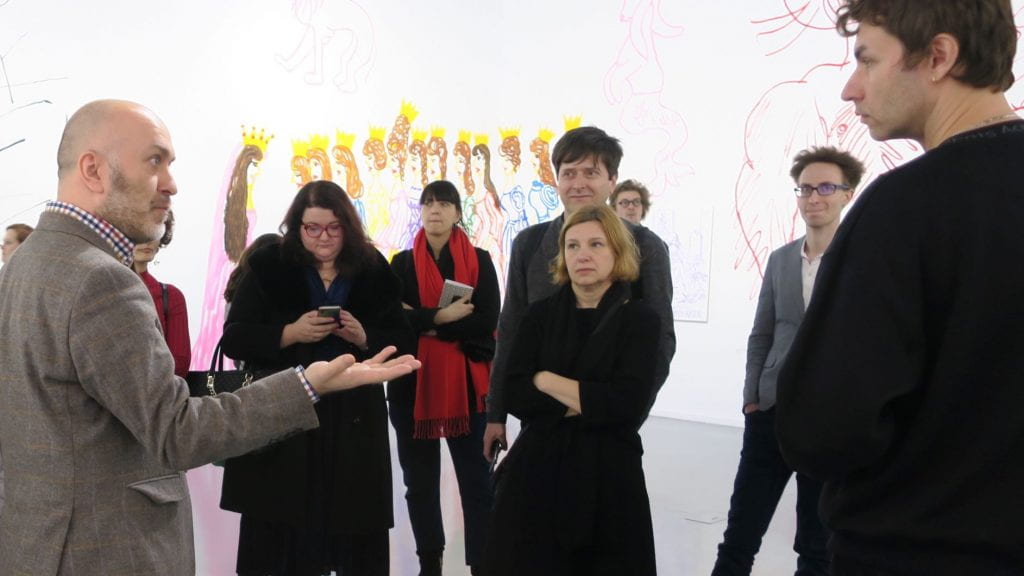Power of Secrets
By editorial, on 3 March 2020
Corina L. Apostol
 Karol Radziszewski “The Power of Secrets” at Ujazdowski Castle Centre for Contemporary Art in Warsaw is probably one of the best shows I’ve seen in Europe this year. It was a revealing experience having a special tour of the project with the artist himself and the art historian and critic Adam Mazur. The exhibition is the first large scale presentation of Radziszewski’s extensive art practice and it comes at a critical moment in Polish art history. The recent appointment of a director for the Center, Piotr Bernatowicz has been strongly criticized in Poland and abroad as a politically motivated decision that would go a long way to advance a far-right agenda in the arts. Indeed we experienced first hand the effects of Poland’s turn to the far-right even before we entered the exhibition when one of our colleagues was almost banned from having her baby with her, as Radziszewski’s work could only be viewed by adult visitors, given its queer subject matter. Nonetheless, after some tense negotiations with the guards, we were all allowed inside.
Karol Radziszewski “The Power of Secrets” at Ujazdowski Castle Centre for Contemporary Art in Warsaw is probably one of the best shows I’ve seen in Europe this year. It was a revealing experience having a special tour of the project with the artist himself and the art historian and critic Adam Mazur. The exhibition is the first large scale presentation of Radziszewski’s extensive art practice and it comes at a critical moment in Polish art history. The recent appointment of a director for the Center, Piotr Bernatowicz has been strongly criticized in Poland and abroad as a politically motivated decision that would go a long way to advance a far-right agenda in the arts. Indeed we experienced first hand the effects of Poland’s turn to the far-right even before we entered the exhibition when one of our colleagues was almost banned from having her baby with her, as Radziszewski’s work could only be viewed by adult visitors, given its queer subject matter. Nonetheless, after some tense negotiations with the guards, we were all allowed inside.
The artist acts as an amateur art historian, a collector of queer histories, and as a curator in this exhibition (the show also includes works by Ryszard Kisiel, Natalia LL, Libuše Jarcovjákova, Wolfgang Tillmans and the collective General Idea). The show opens with quotes and drawings from his childhood, combining fairy tales with fantasies and memories. The histories he is recuperating are very compellingly presented in the show, which mixes political events with intimate stories, private narratives, and public ones. Part of the exhibition is dedicated to queer heroines and heroes (Taras Shevchenk, Wojciech Skrodzki and Ewa Hołuszko) as well as other prominent figures from Polish history whose queer identities have remained hidden. These are shown as part of the Queer Archives Institute, an informal institution created by the artist focused on the ongoing research of queer histories in Central and Eastern Europe.
Radziszewski’s work can be thought of as a practice of self-historicizing and also part of a larger movement in our field to write overlooked or erased queer art practitioners and their stories into art history, which compels us to rethink what counts as art historiography. Due to the policing of queer lives and queer art in Poland it, unfortunately, seems that many significant works and artists will remain more private or hidden away in personal archives rather than in major museums in the country. Which is what makes “The Power of Secrets” even more significant today.
 Close
Close


